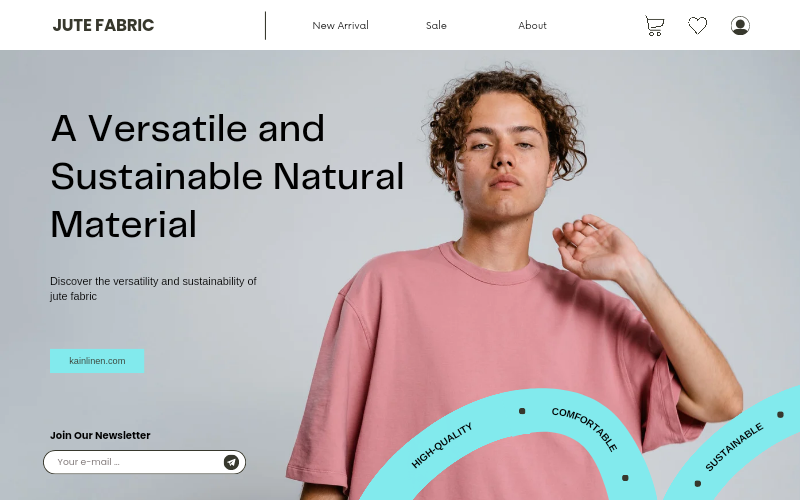Discover the versatility and sustainability of jute fabric. Learn about its unique characteristics, production process, and various applications.
Explore the eco-friendly benefits of jute fabric and its growing popularity in the fashion and home decor industries.
Jute fabric is a versatile and sustainable material known for its eco-friendly properties.
Derived from the jute plant, it offers a wide range of applications, making it a popular choice in various industries.
This article delves into the unique characteristics of jute fabric, its production process, and its increasing popularity as an environmentally friendly alternative.
Characteristics of Jute Fabric
Jute fabric boasts several distinctive characteristics that make it stand out from other materials.
Firstly, it is biodegradable, meaning it can decompose naturally without causing harm to the environment. Additionally, jute fabric possesses excellent insulating properties, making it an ideal choice for insulation purposes.
It is also highly breathable, allowing air to circulate freely, making it comfortable to wear in warm climates. Moreover, jute fabric has a natural golden sheen and a distinct texture, lending an appealing aesthetic to various products.
Production Process of Jute Fabric
The production of jute fabric involves several stages. It begins with the cultivation of the jute plant, which requires a warm and humid climate.
Once the plants reach maturity, they are harvested, and the long fibers are extracted from the stalks through a process called retting.
Retting involves immersing the harvested plants in water to allow the natural decomposition of non-fibrous parts. After retting, the jute fibers are washed, dried, and sorted for quality.
They are then spun into threads, which are woven into fabric using traditional or modern weaving techniques.
Versatility and Applications
Jute fabric finds extensive applications in diverse industries. In the fashion industry, it is used to create stylish and eco-friendly clothing items such as dresses, shirts, and bags.
Its natural appearance and texture add a unique touch to fashion designs. Additionally, jute fabric is popular in the home decor sector.
It is commonly used for curtains, rugs, upholstery, and wall coverings. The rustic charm of jute fabric complements various interior design styles, adding warmth and character to living spaces.
Environmental Benefits
One of the primary advantages of jute fabric is its sustainability. Jute plants require minimal pesticide and fertilizer use, making them an environmentally friendly crop.
Moreover, jute plants absorb large amounts of carbon dioxide during their growth, helping mitigate the effects of greenhouse gases.
Jute fabric is also biodegradable, reducing waste and pollution in landfills. By choosing jute products, consumers contribute to the conservation of natural resources and the reduction of environmental impact.
Jute fabric is a versatile and sustainable natural material with unique characteristics that make it an excellent choice for various applications.
From its eco-friendly production process to its biodegradability and distinctive texture, jute fabric offers a range of benefits. Its popularity in the fashion and home decor industries continues to grow, as more people appreciate its beauty and environmental advantages.
By opting for jute fabric, individuals can embrace a greener lifestyle while enjoying the versatility and aesthetics it provides.

Posting Komentar untuk "Jute Fabric: A Versatile and Sustainable Natural Material"